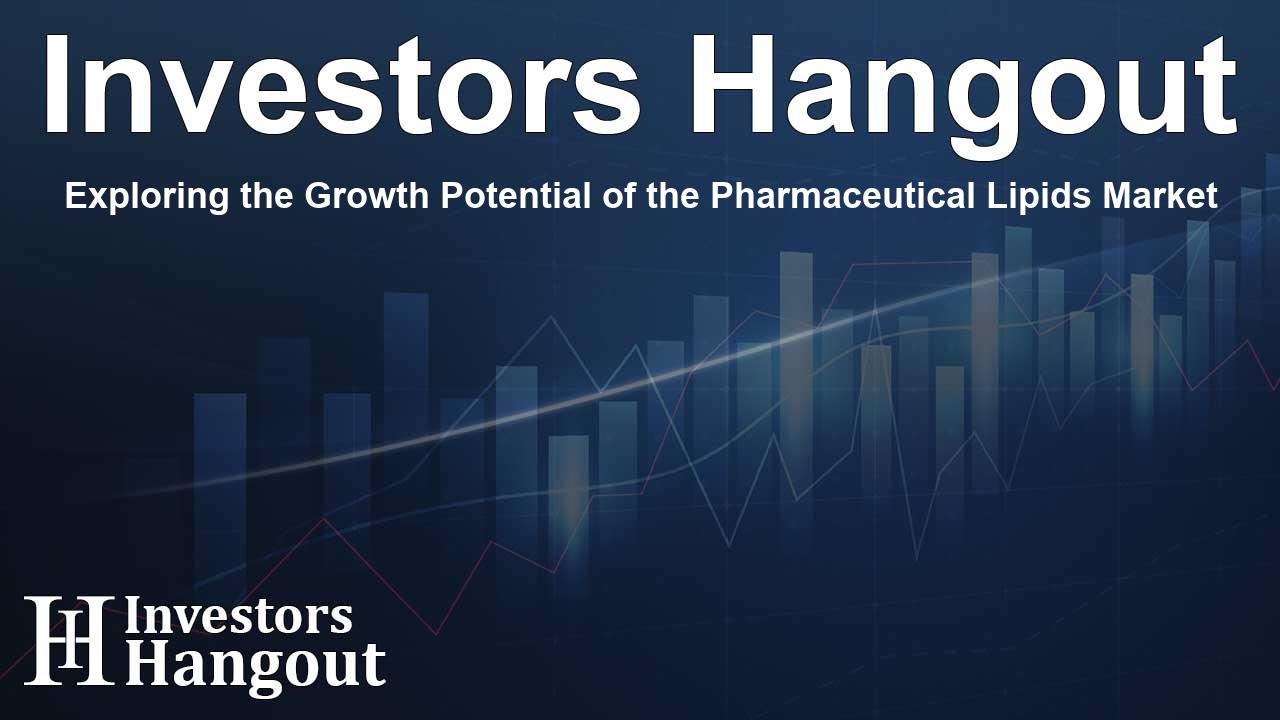Exploring the Growth Potential of the Pharmaceutical Lipids Market

Understanding the Pharmaceutical Lipids Market Growth
The pharmaceutical lipids market is on the brink of remarkable growth, with expectations pointing to a surge from USD 5,492.6 million to USD 9,036.5 million in the years ahead, reflecting a robust CAGR of 5.1%. This growth is propelled by the rising need for advanced drug delivery systems, crucial for the effectiveness of poorly soluble active pharmaceutical ingredients (APIs). The incorporation of lipids has become essential, successfully enhancing drug solubility, stability, and overall bioavailability.
Drivers Behind the Expansion of Pharmaceutical Lipids
As chronic illnesses such as cardiovascular diseases, cancer, and metabolic disorders elevate, the demand for innovative lipid-based therapies is soaring. The continuous advancement in nanotechnology, particularly with lipid-based drug carriers like liposomes and lipid nanoparticles (LNPs), is a significant factor in this expansion. The recent success of lipid-based COVID-19 vaccines has underscored the vital role of lipids in the pharmaceutical sector, paving the way for their incorporation into more vaccine developments and targeted therapies.
Investments in Next-Generation Lipid Formulations
Pharmaceutical companies are pouring substantial investments into the development of next-generation lipid formulations. This is done to boost therapeutic efficacy and polish patient outcomes. The industry is witnessing heightened research and development activities, with strategic collaborations smoothly crafting efficient, stable, and bioavailable drug delivery systems. As these advancements take shape, the adoption rate of lipid-based formulations across various therapeutic areas continues to rise.
Current Trends and Future Projections
The market's trajectory indicates a potential CAGR of 5.0% from 2023 to 2033, projecting the pharmaceutical lipids market to achieve a valuation of USD 8.04 billion by 2033, up from USD 4.93 billion in 2023. Various growth factors contribute significantly to this hype, especially in the booming pharmaceutical industry, where lipids are recognized as critical components enhancing drug properties, particularly for lipophilic, insoluble drugs.
Application Variety
Explore the diverse pharmaceutical and cosmetic applications of lipids, acting not only as energy regulators but also in roles such as binders, lubricants, emulsifiers, ointments, creams, and lotions. This versatility strengthens market positions across multiple sectors.
Strategies by Market Leaders
Market players are looking toward aggressive strategies, which include collaborations, acquisitions, expansions, product launches, and research sponsorships to boost their presence. Scaling business operations through cultivated market development processes and tapping into the agricultural sector's growing demand for lipid-based solutions is generating significant competitive advantages for organizations within the industry.
The Role of Glycerol and Fatty Acids
Glycerol, also known as glycerin, is a fundamental molecule featuring a trihydroxy alcohol structure. It plays important functions in various biological processes and is commonly used in pharmaceutical formulations to enhance texture and taste, and act as a solvent in drugs aimed for serums and vaccines.
On the other hand, fatty acids—lipids consisting of a carboxyl group bonded to a lengthy hydrocarbon chain—become major energy storage units and are crucial for signaling and inflammation processes in the body. They assist in the structure of cell membranes and the storage and insulation of vital organs.
Key Market Insights and Future Directions
With a projected market valuation expected to flourish as investments in lipid-based therapeutics escalate, it is apparent that pharmaceutical lipids are vital in modern drug formulation. The momentum gained through mRNA vaccine advancements has showcased the essential role lipids play, making innovations in lipid technology crucial for leading firms seeking competitive advantages in the market.
Frequently Asked Questions
1. What factors are driving the growth of the pharmaceutical lipids market?
The increasing prevalence of chronic diseases alongside advancements in lipid-based therapeutic technologies significantly contribute to market growth.
2. How do lipid formulations improve drug delivery?
Lipid formulations enhance the solubility, stability, and absorption of pharmaceutical ingredients, essential for effective medication.
3. Which sectors predominantly use pharmaceutical lipids?
Pharmaceutical lipids find applications across various sectors, including oncology, immunology, and vaccine development.
4. What distinguishes lipid nanoparticles from other drug delivery systems?
Lipid nanoparticles offer superior biocompatibility and controlled release properties, making them favorable for targeted therapies.
5. What outlook is there for the pharmaceutical lipids market by 2035?
The market is anticipated to reach USD 9,036.5 million by 2035, continuously driven by innovation in therapeutic applications.
About The Author
Contact Kelly Martin privately here. Or send an email with ATTN: Kelly Martin as the subject to contact@investorshangout.com.
About Investors Hangout
Investors Hangout is a leading online stock forum for financial discussion and learning, offering a wide range of free tools and resources. It draws in traders of all levels, who exchange market knowledge, investigate trading tactics, and keep an eye on industry developments in real time. Featuring financial articles, stock message boards, quotes, charts, company profiles, and live news updates. Through cooperative learning and a wealth of informational resources, it helps users from novices creating their first portfolios to experts honing their techniques. Join Investors Hangout today: https://investorshangout.com/
The content of this article is based on factual, publicly available information and does not represent legal, financial, or investment advice. Investors Hangout does not offer financial advice, and the author is not a licensed financial advisor. Consult a qualified advisor before making any financial or investment decisions based on this article. This article should not be considered advice to purchase, sell, or hold any securities or other investments. If any of the material provided here is inaccurate, please contact us for corrections.
